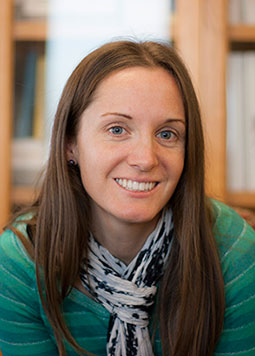Video
WATCH: Improving access to treat childhood diarrhoea in Kenya
July 15, 2025
WP_Term Object
(
[term_id] => 49
[name] => Field Stories
[slug] => all-field-stories
[term_group] => 0
[term_taxonomy_id] => 49
[taxonomy] => news-category
[description] => Discover the personal stories of people whose lives have been impacted by better nutrition, and those working tirelessly to deliver it.
[parent] => 0
[count] => 181
[filter] => raw
)
Dr. Marion Roche: Thinking Inside the Box to Save Children’s Lives in Guatemala
For the next year, Dr. Marion Roche, MI's Technical Advisor for Behaviour Change Communication, will be talking about something most of us don't want to hear about – diarrhoea.
Posted on November 23, 2012
 For the next year, Dr. Marion Roche, MI’s Technical Advisor for Behaviour Change Communication, will be talking about something most of us don’t want to hear about – diarrhoea.
For the next year, Dr. Marion Roche, MI’s Technical Advisor for Behaviour Change Communication, will be talking about something most of us don’t want to hear about – diarrhoea.
It’s not a subject most people like to hear about but the more she talks about it, the less of it there will be to deal with.
Marion is about to embark on a new research project to improve the way diarrhoea is treated in Guatemalan children, thanks to Grand Challenges Canada, who has named her one of Canada’s Stars in Global Health.
Diarrhoea is one of the biggest killers of children, with around a million children losing their lives to this disease every year, including 980 children in Guatemala. Even when it doesn’t kill children, it leaves them weak and vulnerable to other infections.
In recent years, zinc supplementation, along with oral rehydration salts (ORS), has been found not only to help children get better from diarrhoea faster, but also save their lives. Guatemala has taken significant steps to ramp up the use of zinc and ORS to treat diarrhoea through health centres but not all health care workers and families know about the treatment, its benefits and full use.


Guatemalan mothers are reliant upon health workers to provide them information and to treat their sick children.
“I’m trying to figure out if and how much additional investment in training, behaviour change communication, packaging and marketing will reap significant gains in improved health and survival of children,” said Marion.
By helping mothers and health care workers understand the benefit of zinc and ORS to the health of children, Marion expects to see a great reduction in the number and severity of cases of diarrhoea.
“Diarrhoea takes away a child’s energy and dignity,” Marion said. “So it really is exciting to work in global nutrition at a time where something like combined zinc and ORS really has such high potential to save lives and reduce the burden of disease for children and their families.”
Marion will work with the Guatemala Ministry of Health and CeSSIAM, a renowned Guatemalan based research institution, to take a social marketing approach to catalyze interest in taking zinc to control childhood diarrhoea.
“We are going to test two different ways of co-packaging the zinc supplements and ORS,” she explained. “The first proposed packaging option is a simple bag or elastic band to ensure the zinc and ORS are given out together, while the second option is a cajita salvavida, or life-saving box, that is covered with promotional messages to both the providers and mothers.”
Working in the San Marcos area of the country and primarily with indigenous communities, the project will see zinc and ORS delivered through a community distribution system at the health centre level with follow-up home visits.
The research will address legitimate concerns in countries rolling out combined zinc and ORS treatment that if caregivers receive zinc and ORS from different sources, they may be less likely to use them in combination, undermining their effectiveness.
The assumption being tested by the research is that physical and visible co-packaging could not only generate interest in the product and but also create awareness of the need for the combined treatment among health care providers and caregivers.
Importantly, the research will determine the cost-effectiveness of the packaging and delivery methods, determining the financial implications of each. This will provide critical data for the Guatemalan Ministry of Health as it scales up combined zinc and ORS treatment as a part of its National Nutrition Strategy.
The pilot research will focus on determining caregiver needs and motivations around diarrhoea management in their children, and help to understand and address the physical and perceived barriers that are preventing caregivers from providing treatment.
“With better understanding and improved messaging, not only can we shorten the duration of the diarrhoea episodes, we can reduce the number of episodes a child has,” said Marion.
The project will also test the effectiveness of a social marketing approach in increasing demand by creating packaging mechanisms and distribution channels that are based on formative research with caregivers and providers.
As spring approaches it is expected that there will be an increase in children getting sick from diarrhoea in Guatemala. Marion hopes that this pilot project will instead result in an increase in understanding and options in treating diarrhoea cheaply and effectively.
Grand Challenges Canada, funded by the Government of Canada, is dedicated to supporting bold ideas with big impact in global health; using behaviour change science can have a profound effect on the introduction and use of new health interventions.
Not only could this project improve the use of combined zinc and ORS in Guatemala, it could be adapted and applied to hundreds of countries around the world, setting the stage to improve the treatment of diarrhoea globally and potentially saving millions of lives.